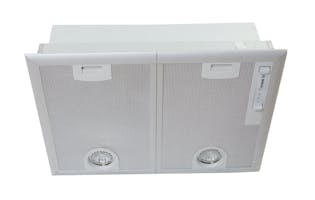Ducted or recirculating rangehoods: which installation is best?

Rangehoods can be installed in one of two modes: ducted, where steam and odours are blown outside via a flexible duct, or recirculating, where air is passed through a carbon or charcoal filter before being returned to your kitchen.

We test and publish scores for both rangehood modes.
So, what are the top considerations when choosing a rangehood mode, and which is best for extraction performance and noise?
In brief
- Ducted rangehoods generally perform better than those installed in recirculating mode, but there are exceptions.
- Paying more for a rangehood doesn’t necessarily mean you’ll get a better performer.
- Ducted installations are often quieter than recirculating, but the difference isn’t huge and there are exceptions.
- In general, the more you pay the quieter the rangehood will be, but there are a couple of outliers.
- Rangehoods installed in recirculating mode will vent clean moist air back into your kitchen.
Ducted versus recirculating: how to choose a mode
Generally, it’s preferable to install a rangehood in ducted mode, as all the moisture and odours from your kitchen get vented outside, whereas with a recirculating setup, clean but damp air is returned to your kitchen.
Sometimes it’s not possible to fit a duct – especially in apartments or homes where the kitchen hob is not near an external wall. Installation cost can also be an issue – cutting holes through walls and running ducts may require a builder.
But on the flip side, rangehoods installed in recirculating mode require regular filter replacements, which is an added cost to consider.
How we test rangehoods
We test how well ducted and recirculating rangehoods remove steam by assessing how much steam they collect and how much steam escapes, for both low and high fan settings. We do this by boiling 1 litre of water per saucepan, starting with two saucepans and then repeating the test with four pans.
Steam extraction
On average, it’s better to install in ducted mode, but let’s look at how individual models compare.
Rangehood models are arranged from most to least expensive in the graph.
The more expensive models may be larger and have better design, lighting, fans or brand names, but you can see there isn’t a trend for higher priced models performing better.
Most models score higher in ducted mode, but there are several models that perform equally well in recirculating mode; we’ve highlighted these in red – the Omega ORC94XBA, Neff D57ML67N1B and Miele DA 2578.
Some models perform slightly better in recirculating mode (highlighted in grey) – the Bosch DHL895DAU and Award PPS602WH SI.
So, it pays to check our results, especially if you can only install a rangehood in recirculating mode.
Noise levels
Noise is nearly as important as performance when it comes to choosing a rangehood. No one wants the sound of an Airbus A380 taking off in their kitchen after all.
So, is noise dependant on installation mode?
We measure the noise levels of rangehoods by placing a meter 50cm away from the front edge of the hoods. Noise is measured for the lowest and highest fan settings, and then we calculate a quietness score – the higher the score, the quieter the rangehood.
On average, rangehoods installed in ducted mode are a little quieter, but it’s close – let’s look at the results.
Models are arranged from most to least expensive.
There is a slight upward trend that shows the more you pay, the quieter your rangehood will be; however, there are a couple of notable exceptions:
- The Bosch DHL555BAU, which gets a 75 for quietness in ducted mode and costs around $760.
- The Robinhood RO61SS/WH/80, which only costs $299 and is interestingly quieter in recirculating mode than ducted (it’s the quietest off all our models in recirculating mode).
Of the models we test, 23 of the 28 models are quieter in ducted mode, but the difference in noise scores between models is often close.
Buying a rangehood
We publish an overall score in our test results, which combines the performance and quietness scores, along with scores for ease of use, predicted reliability and brand satisfaction. So head to our test pages and check these overall scores before making a purchase.
We've tested 82 rangehoods.
Find the right one for you.
Award
.jpg&w=315&q=75)
Award
.jpg&w=315&q=75)
Bosch

Member comments
Get access to comment